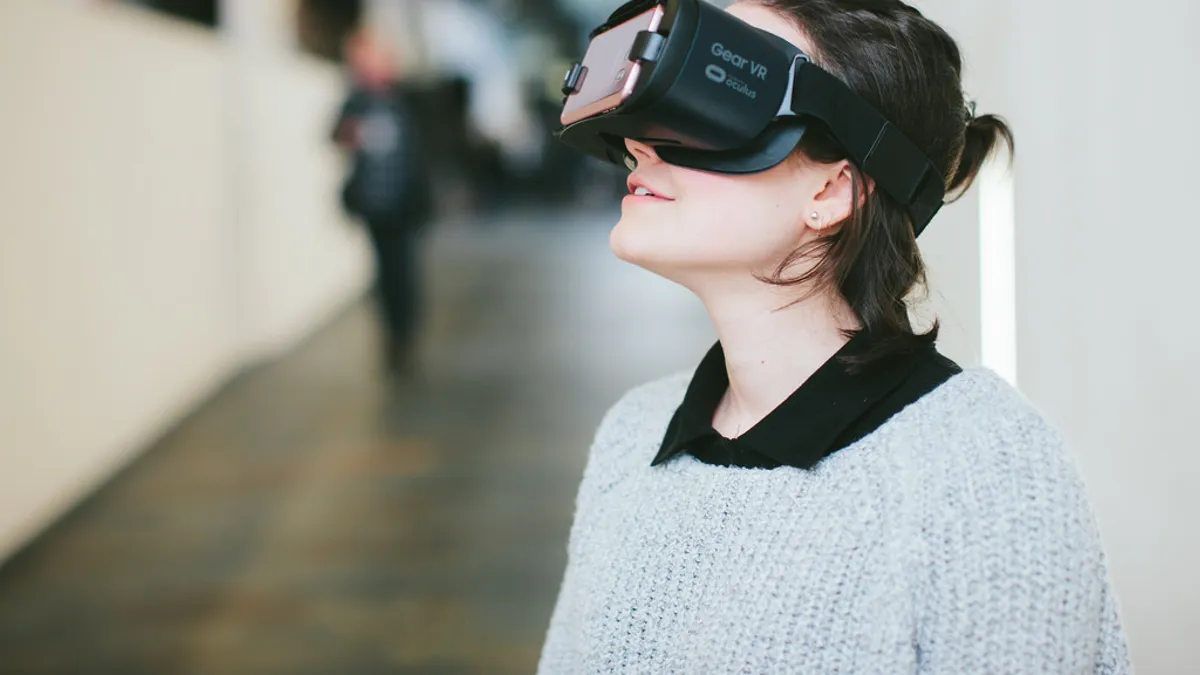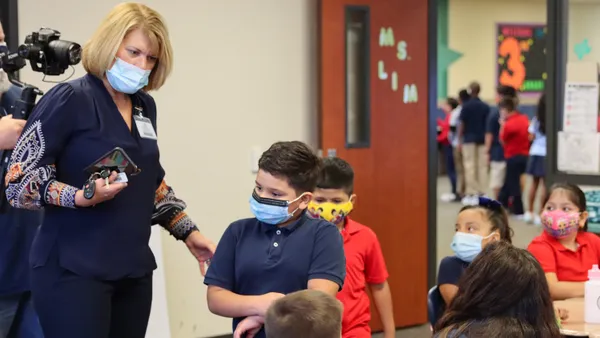Dive Brief:
- Jan Sikorsky worked with a team two years ago to build a 10-minute virtual simulation for a summer camp, where virtual reality put students in a medical professional's shoes in cleaning glass from a patient's wound, he wrote in EdSurge.
- Sikorsky, the product planning and development vice president for Envision Experience — a for-profit company that offers technology, career and leadership programs — is a proponent of VR, citing research that found students' retention, synthesis and application abilities are stronger after taking part in virtual reality exercises.
- To effectively introduce VR to students, Sikorsky said they first need a tutorial to get comfortable with the technology. After that, Sikorsky’s team looked for other ways to extend their learning, taking students to a local hospital’s trauma center to tie what they’d experienced virtually to the real world.
Dive Insight:
Virtual reality is quickly morphing from a fun, quirky classroom experience into a tool that can have a significant impact on student learning. Children rarely have an opportunity to travel the world — field trip budgets are never going to be that robust. But through VR, they can visit global landmarks from the Pyramids of Giza to the North Pole, experiences that would be fiscally impossible otherwise.
VR is not as expensive of an undertaking as many initially assume. While robust VR headsets and content can cost thousands of dollars, less pricey set-ups can sometimes cost about $3 to $5 per device. These cheaper headsets do rely on smartphones — which not every child have access to — but some teachers have seen students successfully share headsets and a smartphone for class projects.
Bringing VR into K-12 classrooms is also a good college prep move that curriculum designers may want to consider. As of June, almost half of universities and colleges were using VR on campus in some capacity, and 18% had "fully deployed" VR.
Computers and, at one point, older technology like typewriters were once novelties in schools. But with augmented reality technology — the ability to overlay virtual images into a real-world view — now becoming a standard for most smartphones, VR, which fully immerses someone in a virtual space, is swiftly moving from an expensive reach to something every student needs to be successful in their next phase of their education.













